10 Of The Worst Team-Mate Combinations To Ever Grace F1
Including Senna and Prost in this list is nothing to do with talent - something they both had a hell of a lot of. They enjoyed incredible success with McLaren in 1988 and 1989, each taking one drivers’ title each. However, tension within the team was high, and sparks well and truly flew as they battled for victory race after race.
The rivalry reached its peak at the 1989 Japanese Grand Prix, when the two famously collided. Senna continued and won the race, only to be disqualified for using the escape road. He felt he had been unfairly treated, with Prost going on to take the title. Their close competition continued despite Prost’s departure at the end of the season.
2. Pierre-Henri Raphanel and Gregor Foitek
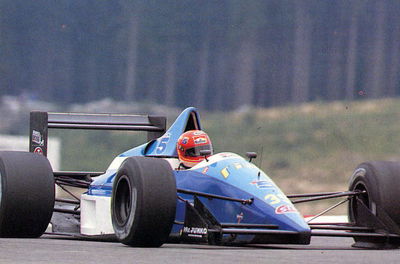
Rial was one of those F1 teams in the late 1980s that rarely qualified for races, and when it did, the car usually broke down. The backmarker’s driver line-up changed regularly, with the worst combination being Raphanel and Foitek at the 1989 Spanish Grand Prix.
Raphanel failed to qualify for 16 of the 17 races he entered. In Spain he was over five seconds off the pace, but that was still three seconds quicker than Foitek. The accident-prone Swiss driver had limited success in Formula 3000 before trying and failing to qualify for the first 11 races of 1989 with the EuroBrun outfit. He didn’t make the cut in Spain for Rial but made three starts for Onyx in 1990.
On paper, this was the perfect driver line-up. A double world champion and a super-quick rookie at McLaren in 2007, what could go wrong? With Hamilton proving to be a strong match for Alonso and a title challenger, the relationship quickly soured.
Alonso lost plenty of fans – particularly when he held up his team-mate in Hungarian Grand Prix qualifying to prevent Hamilton from beating his pole position time - and left the team at the end of the season. Fortunately his relationship with Hamilton has improved over the years.
4. Giovanni Lavaggi and Andrea Montermini
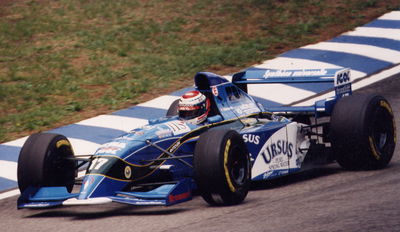
Pacific found success in feeder categories, but failed spectacularly when it made the move to F1. The team failed to qualify 25 times in 1994, but things did improve for the following season. Lavaggi and Montermini were team-mates for four races mid-way through 1995.
Lavaggi was once described as “desperately slow” and struggled during his outings for Pacific, failing to register a race finish. However, he did enjoy more success in sportscars. Montermini switched between small backmarker teams during the mid-90s, failing to impress. You can still read about him on Pacific’s old website!
5. Ricardo Rosset and Vincenzo Sospiri
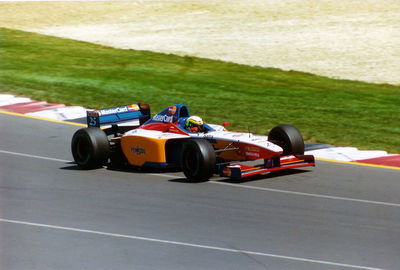
Driving for one of F1’s worst ever teams, Rosset and Sospiri were the unfortunate pilots of the disastrous Mastercard Lola project. It lasted just one round, with both drivers over 10 seconds off the pace and failing to qualify – the car was woefully slow, but the driver choice didn’t help matters…
Rosset showed promise in junior categories but suffered two miserable seasons with Footwork in 1996 and Tyrrell in 1998. He brought plenty of sponsorship but his results never matched expectations. Sospiri beat Rosset to the 1995 Formula 3000 title but was never handed a big break in F1, instead switching focus to IndyCar and sportscars.
Felipe Massa had to miss the second half of the 2009 season after a frightening accident during qualifying in Hungary. Michael Schumacher was rumoured to be returning to F1 in his place, but Ferrari eventually opted for long-time test driver Luca Badoer.
The Italian suffered an underwhelming early career in F1, racing for backmarkers in the late 90s before switching focus to his test driver duties with Ferrari. He raced for the famous team twice in 2009, but was well off the pace of Raikkonen in qualifying, starting and finishing last in both races.
7. Jean-Denis Deletraz and Hideki Noda
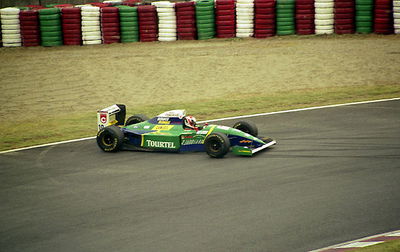
Larrousse was on its last legs in 1994, with (unsurprisingly for small F1 teams in the 1990s) huge financial problems. Noda was drafted in as a pay driver for the last three rounds, and was joined at the finale by the well-funded Deletraz. It was a poor line-up for an equally poor team.
Noda enjoyed some success in Europe and was out-paced in his first two races for Larrousse, before being comfortably faster than Deletraz at the Australian Grand Prix. Both failed to finish, with the team then folding. Noda went on to race single-seaters in America and Japan, while Deletraz enjoyed two class wins at the Le Mans 24 Hours.
Another mention for the Footwork team, this time its driver line-up from the eighth to the 14th rounds of the 1995 season. Max Papis replaced Gianni Morbidelli, bringing a vital cash boost.
The Italian’s speed is best summed up by the fact that, at times, he was out-paced by team-mate Taki Inoue, who describes himself as one of F1’s worst drivers and is best known for being hit by a medical car at the Hungarian Grand Prix.
Here’s another bad team-mate combination from the last 1980s, racing for Minardi in the first five rounds of the 1988 season. Campos was racing in F1 for a second year, after retiring from 13 races, being disqualified from one, not starting another and finishing 14th in Spain the previous season
He failed to qualify for three of his five races in 1988 before being dropped. Campos later went on to establish his own feeder series team and kick-started the HRT F1 project. Sala raced for the entire season but was out-paced convincingly by Pierluigi Martini, who replaced Campos. He remained in F1 until 1989, when he switched to touring cars. He was team principal of the HRT F1 team in 2012.
10. Giovanna Amati and Eric van de Poele
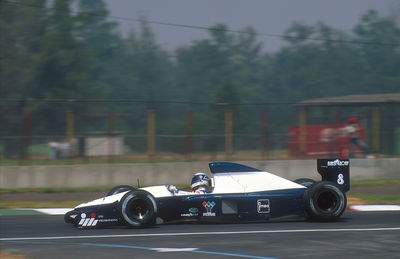
1992 was the final season in F1 for the iconic Brabham team. The first three rounds saw Giovanna Amati – the last female to try to qualify for an F1 race - and Eric van de Poele drive for the British outfit, but with little success.
Amati failed to qualify for the first three races of 1992, after underwhelming results in feeder categories. She was consistently four seconds slower than van de Poele, who had more experience and brought considerable sponsorship. Things improved slightly when Amati was replaced by eventual F1 champion Damon Hill, but there was no saving Brabham.













Comments
No comments found.